
Isuzu fire engine is mainly used for emergency rescue and firefighting at fire scene. Its powerful water pump system can quickly spray a large amount of water to effectively control the spread of fire. The various firefighting equipment and rescue equipment equipped on the vehicle can implement various rescue operations such as personnel search and rescue and material transfer in emergency situations such as fire and traffic accidents, which plays an important role in protecting the safety of people's lives and property.
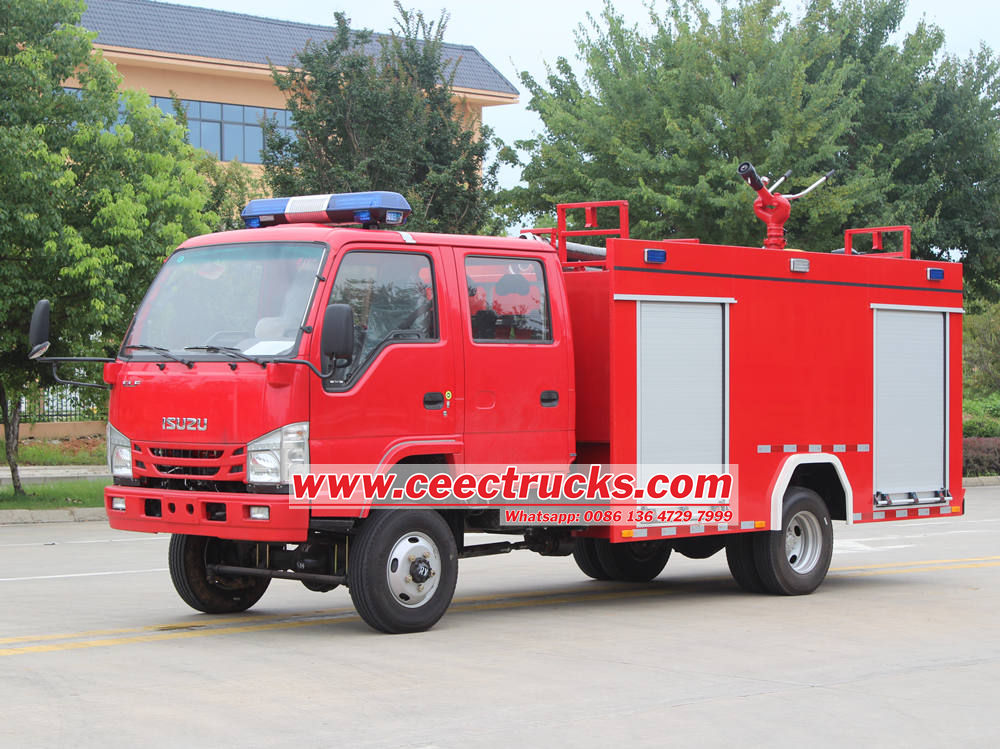
Isuzu fire engine also called fire truck, water fire truck, foam fire truck, fire rescue truck) is a powerful professional rescue vehicle, using the advanced Isuzu chassis, equipped with an efficient fire pump and water tank system. It is well designed, has good off-road performance and stability, and can quickly reach the fire scene in various complex environments.
|
TECHNICAL SPECIFICATIONS |
||
|
Main specifications |
Chassis brand |
ISUZU |
|
Overall dimension(L*W*H) |
5998×2000×2860mm |
|
|
GVW |
7300Kg |
|
|
Curb weight |
3300Kg |
|
|
Water tank volume |
3,000 liters |
|
|
Cabin |
double cabin, 2+3seats,with Air conditioner, electronic windows, USB |
|
|
Chassis |
Drive model |
4x4 left hand drive |
|
Axle (front/rear) loading |
2.5t/4.8t |
|
|
Front/rear suspension |
1015/1623mm |
|
|
Wheel Base |
3360mm |
|
|
Approach/departure angle |
24/13(°) |
|
|
Tyre size & number |
7.00R16 with one spare tire |
|
|
Transmission |
ISUZU MSB brand, manual, 5 gears with reverse |
|
|
Brake |
Oil brake, With ABS |
|
|
Color |
Red and white including tanker , standard . |
|
|
Engine |
Brand |
ISUZU |
|
Model |
4KH1CN6LB |
|
|
Engine Type |
Four-cylinder, in-line, water cooling, direct injection(DI) type, turbocharged, intercooling |
|
|
Horse power |
120 HP/88Kw |
|
|
Displacement |
2999ml |
|
|
Emission |
Euro 6 |
|
|
Upper Body |
||
|
Water tank volume |
3000 Liters |
|
|
Tank material |
Carbon steel |
|
|
Water tank thickness |
4 mm |
|
|
Fire pump model |
CB10/30, Normal pressure pump |
|
|
Fire pump pressure |
≥1.0 Mpa |
|
|
Fire pump max suction height |
7 m |
|
|
Fire pump flow |
30 (L/S) |
|
|
Fire pump rated speed |
3000 (r/min) |
|
|
Fire pump time of drawing water |
≤35 (s) |
|
|
Fire pump Input |
1 unit, diameter: 100mm |
|
|
Fire pump Outlet |
2 units, diameter: 65mm |
|
|
Fire monitor Model |
PS8/30W, mounted on the top of tank |
|
|
Fire monitor rated working pressure |
0.8 Mpa |
|
|
Fire monitor max working pressure |
1Mpa |
|
|
Fire monitor rated flow |
30 L/S |
|
|
Fire monitor rotation angle |
360° |
|
|
Standard configurations |
Water pump operation panel in English, fender should be black, with alarm light, detachable ladder, body rear equipment box under the direction of the upward tilt of about 45 degrees, all interfaces of the vehicle and accessories are British, with a 30m roll of black high-pressure hose |
|
The structure of an Isuzu fire truck
1. Chassis: The chassis is the basic part of the entire fire engine. The Isuzu chassis has the characteristics of strong bearing capacity and good shock resistance.
2. Water tank: The water tank is the core component of the fire engine. It is made of stainless steel or aluminum alloy. The capacity is determined according to different needs.
3. Pump group: The pump group is the power source of the fire engine. It uses a diesel engine or an electric motor as the driving force. It can pump water out of the water tank and spray it out through a high-pressure water gun.
4. High-pressure water gun: The high-pressure water gun is one of the main fire-fighting tools. It can spray high-pressure water to the fire source for fire extinguishing.
5. Other equipment: In addition to the above main components, other equipment such as fire extinguishers, gas fire extinguishing systems, and communication equipment can also be configured as needed.
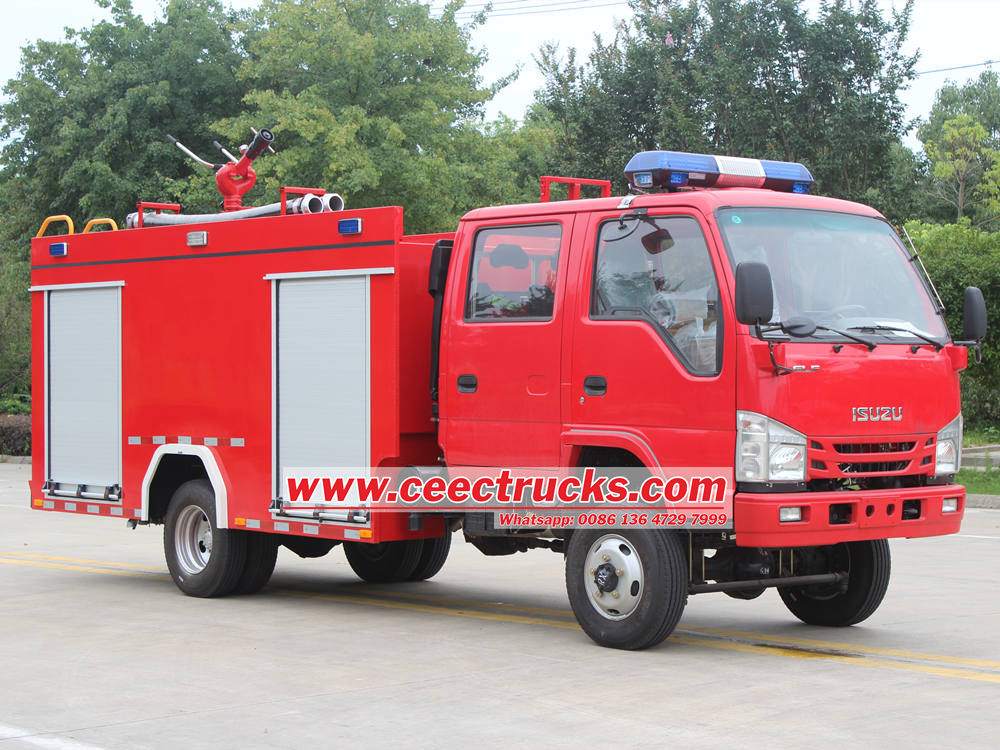
Isuzu fire engine are an essential piece of equipment for fire departments and emergency response teams around the world. They are designed to quickly and efficiently extinguish fires, rescue people from danger, and provide critical support during emergencies. To effectively use an Isuzu fire engine, there are several important steps that must be followed:
1.Understanding the Basics
Before operating an Isuzu fire engine, it is crucial to understand the basic functions and features of the vehicle. Familiarize yourself with the various controls, instruments, and equipment on the fire engine, such as the water pump, hose reels, nozzles, and ladders. Make sure to inspect the vehicle regularly for any damage or malfunction and ensure that all equipment is in good working condition.
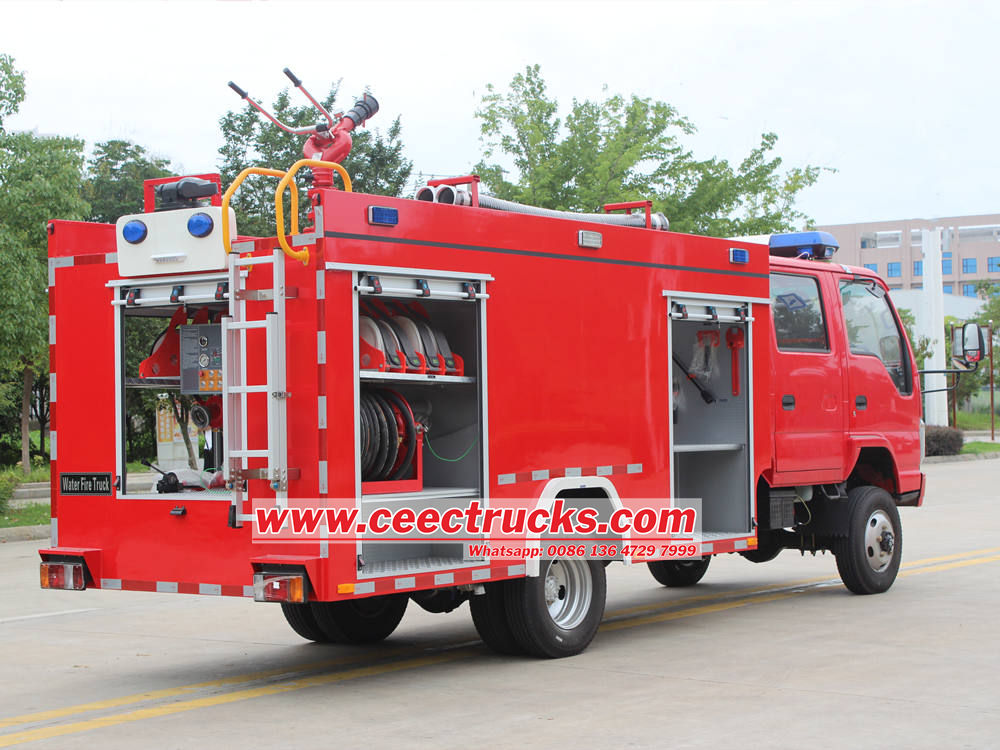
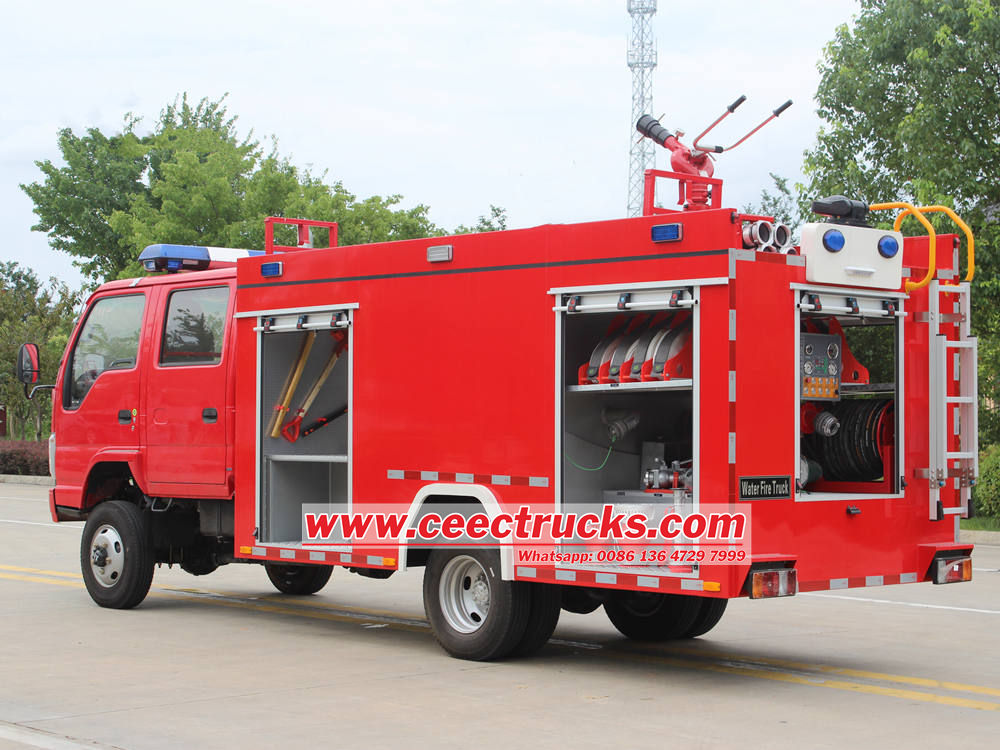
2.Firefighting Techniques
When responding to a fire emergency, it is essential to follow proper firefighting techniques to ensure the safety of yourself and others. Upon arrival at the scene, assess the situation and determine the best approach to extinguishing the fire. Position the fire engine in a strategic location to access the fire and deploy the necessary equipment. Use the water pump to supply water to the hoses and nozzles, and aim the stream of water at the base of the fire to extinguish it effectively.
In addition to extinguishing fires, Isuzu fire engines can also be used for rescue operations, such as extracting people from burning buildings or vehicles. Familiarize yourself with the operation of the vehicle's ladders and other rescue equipment to safely and efficiently carry out rescue operations.
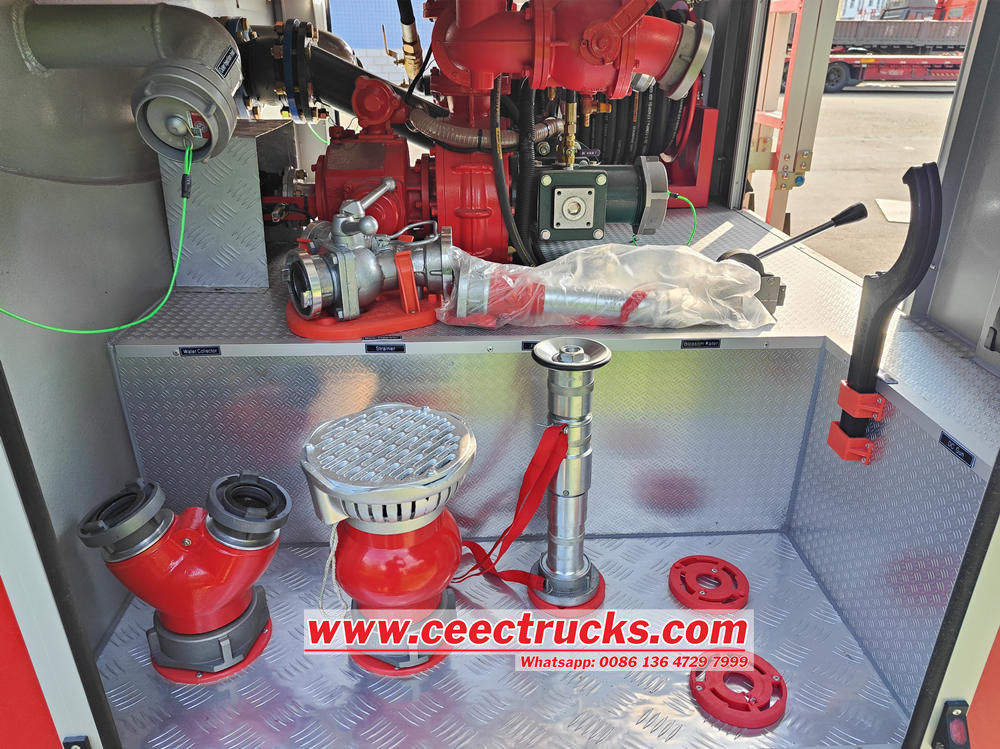
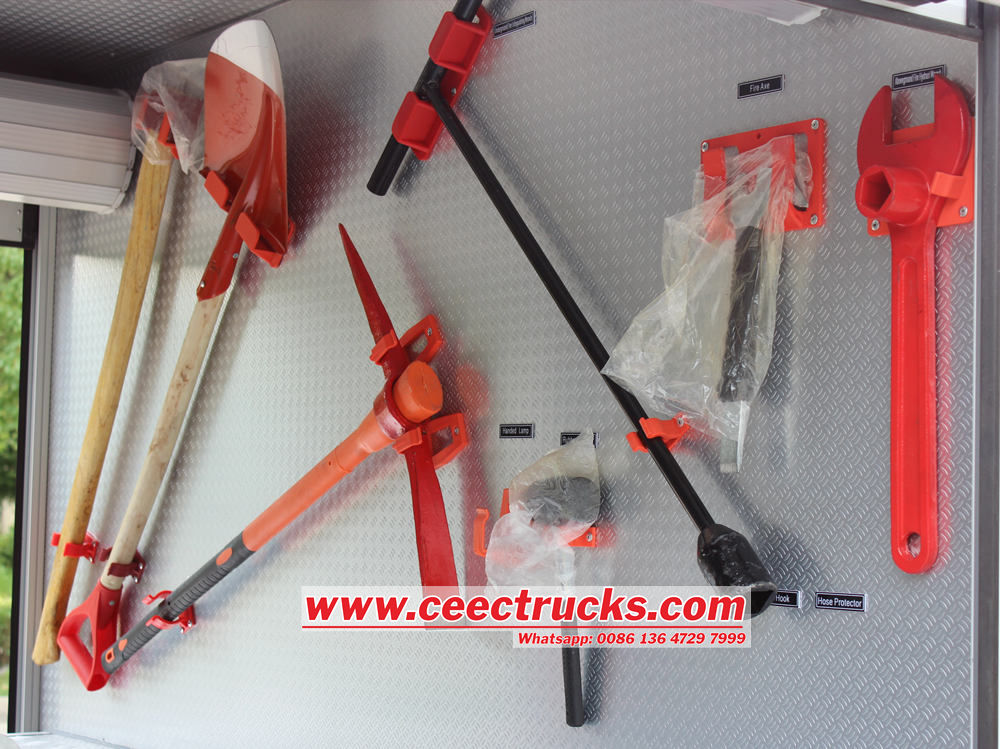
3.Maintenance and Safety
Proper maintenance of an Isuzu fire engine is essential to ensure its reliability and performance during emergencies. Regularly inspect the vehicle for any signs of wear or damage, such as leaks, dents, or missing equipment. Perform routine maintenance tasks, such as checking and topping up fluids, inspecting hoses and connections, and testing the water pump and other equipment.
Safety is paramount when operating an Isuzu fire engine. Follow all safety guidelines and protocols established by your fire department or emergency response team. Wear the appropriate personal protective equipment, such as helmets, gloves, and fire-resistant clothing, to protect yourself from heat, flames, and smoke. Practice proper lifting techniques when handling heavy equipment or performing rescue operations to prevent injuries.

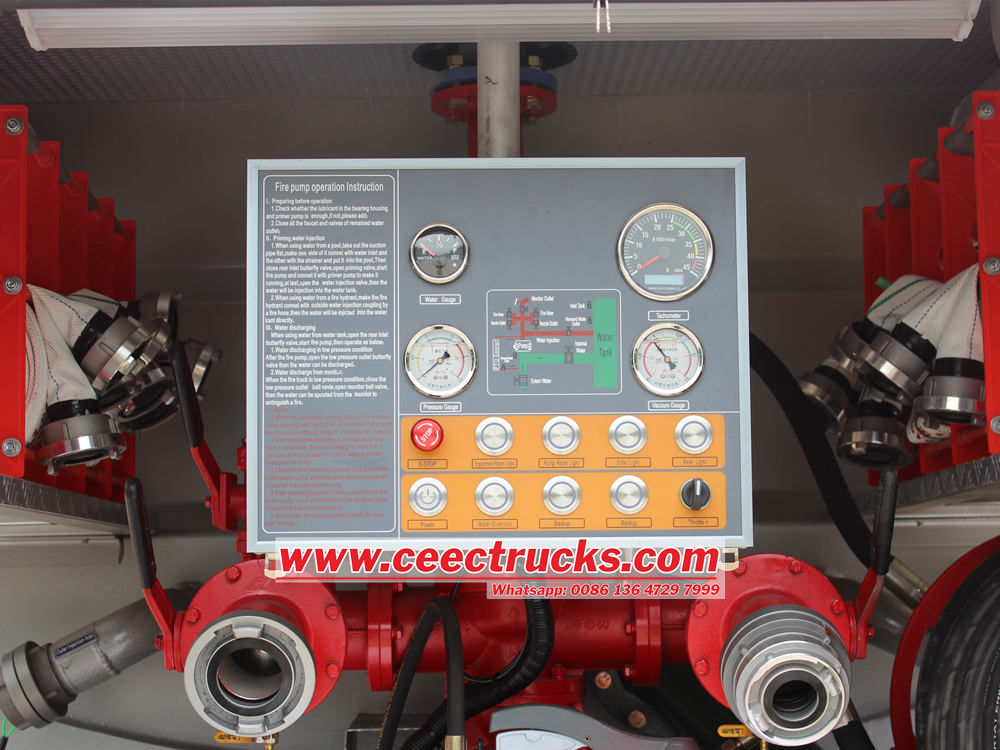
In conclusion, using an Isuzu fire engine requires an understanding of its basic functions, following proper firefighting techniques, and prioritizing maintenance and safety. By following these steps, you can effectively and efficiently operate an Isuzu fire engine to combat fires, rescue people in danger, and provide critical support during emergencies.